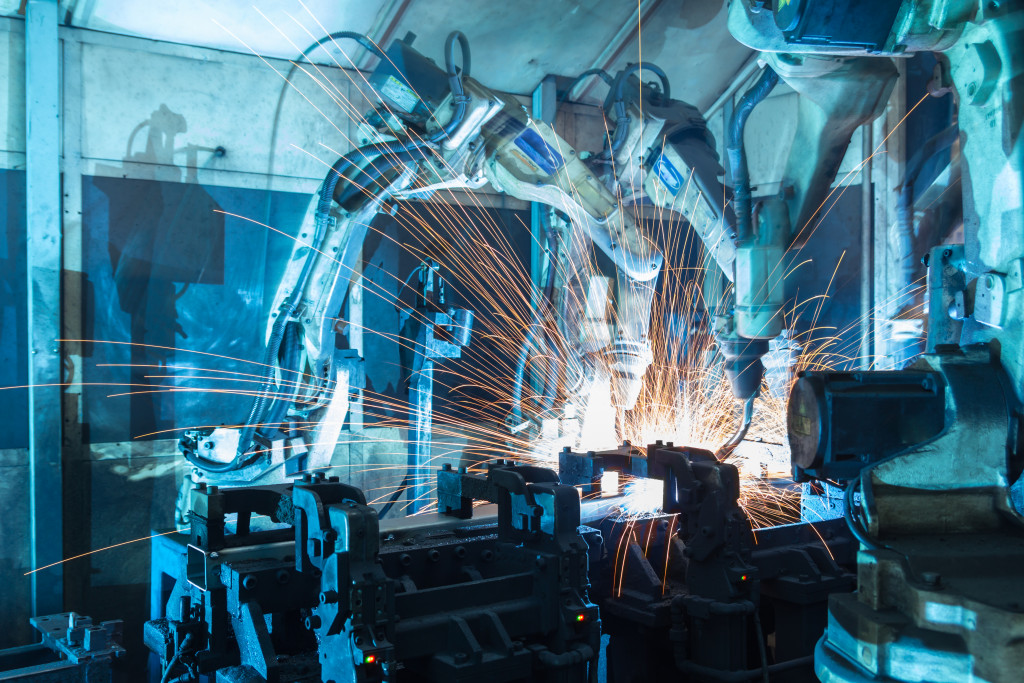- Utilize automation to streamline the production process and increase efficiency while reducing employee errors and manual labor.
- Implement lean manufacturing methods, such as Just-in-Time (JIT) and Kaizen, to reduce lead times, improve accuracy, and reduce costs.
- Invest in reliable control systems for the smooth operation of equipment.
- Implement quality control systems to ensure products meet customer requirements.
- Provide proper training for employees to understand and use the system correctly.
Manufacturing productivity continues to steadily increase and is now 3.5 percent higher than in 2019. Hours worked in manufacturing have resumed close to their original levels, with only a 1.2 percent drop from the fourth quarter of 2019. This labor output resulted in a 4.7 percent surge in total manufacturing production in 2021’s second quarter!
Manufacturing is an incredibly important part of any successful business. However, it can be challenging to ensure that your factory is running efficiently and producing the highest quality products. This article will provide tips on increasing efficiency in your factory and keeping your production line running smoothly.

Automation
Automation is one of the most effective ways to increase efficiency in your factory. By automating certain processes, you can reduce employee errors and eliminate manual labor, thereby increasing productivity and reducing costs. Consider investing in automated equipment such as robots or conveyor belts to streamline production.
Quality Control
An automated system can also help with quality control. The machines can detect and address any discrepancies before they become a problem. The automated systems can also reduce safety issues since fewer people will be needed on the factory floor.
Smooth Operation of Equipment
You should use reliable motion control systems to facilitate the smooth operation of equipment. The system should provide custom speed depending on the needs of the equipment. It should also provide accurate positioning and create less noise than other systems. The system receives instruction from an input device, which relays it to the controller. The controller will send a signal to the drive that will specify the torque and speed by which it operates.
Employee Monitoring
However, it is essential to remember that automation should be used in tandem with employee monitoring and oversight. Automation cannot replace the human element entirely, so it is crucial to have experienced personnel on hand to operate machinery and oversee operations on the floor. Even as automation makes production efficient, it needs human intervention to ensure everything runs smoothly.
Lean Manufacturing Methods
Another way to increase efficiency in your factory is by utilizing lean manufacturing methods such as Just-in-Time (JIT) or Kaizen. These methods focus on eliminating waste, streamlining processes, and optimizing resources and workforce capacity. Doing so can reduce lead times, improve accuracy, and reduce costs associated with production.
Meeting Customer Requirements
Lean manufacturing methods can help ensure your production meets customer requirements while maximizing efficiency. Implementing these methods requires careful planning and implementation to achieve the desired results. Training may be necessary for supervisors and employees to understand how to use the methodology and put it into practice.
Review and Adjust
Additionally, you should regularly review progress and make adjustments as needed to maintain optimal efficiency. In the long term, utilizing lean manufacturing methods can save your business money and increase productivity exponentially.

Quality Control Systems
Quality control systems are essential for ensuring that products meet customer expectations. Investing in a quality control system will help you identify defects quickly and take corrective action immediately, saving your business time and money over the long term.
Adhere to Industry Standards
Investing in a quality control system can help ensure that all products adhere to industry standards, improving overall customer satisfaction. When implementing a quality control system, it is crucial to ensure that employees understand how to use the system and are properly trained on how to identify defects.
Training
Ultimately, the success of any factory relies on its employees. To ensure that your production line runs smoothly, it is essential to provide training for all workers. This should include basic safety procedures and specialized technical skills relevant to their job role. Proper training also ensures that employees understand the processes and how to use the equipment correctly.
Ensuring efficiency in a factory may seem daunting at first glance. But there are several steps that business owners and entrepreneurs can take to ensure that their factories are running smoothly. These strategies also enable the production of high-quality products quickly and cost-effectively. By implementing the strategies enumerated in the article, businesses can ensure that their factories operate at peak efficiency while still producing top-notch products for their customers. With these tips in mind—you’ll be well on your way to having an efficient factory!



